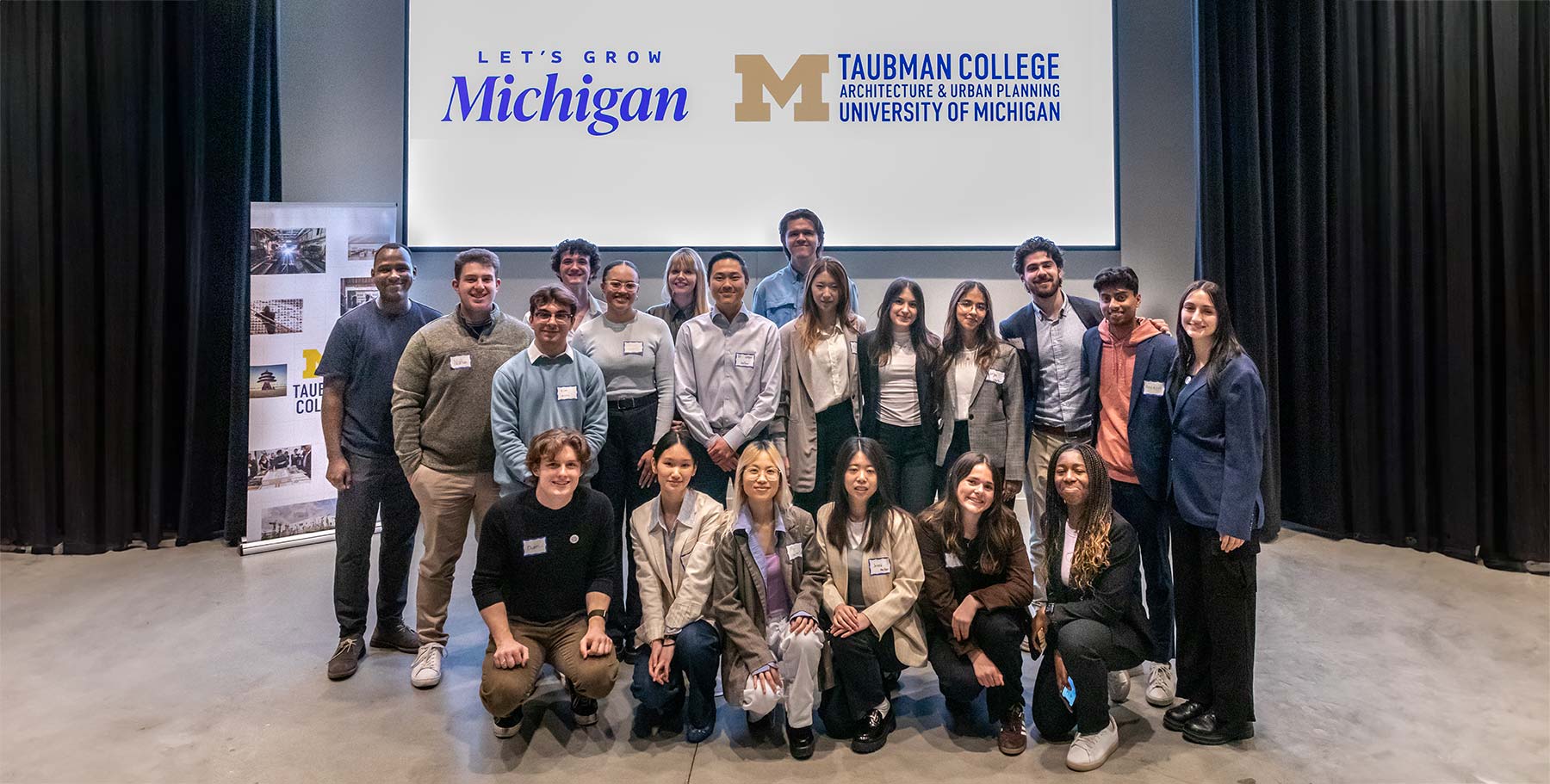By Jonathan Massey
For those of us in schools of architecture, September is an exciting time animated by the return of students and the arrival of those beginning their journey. Architecture school is a powerful framework for cultivating capacities—a place of exploratory, creative, integrative, and rigorous learning and making. The design studio at the heart of our curriculum powerfully enhances student development as peers work together through face-to-face interaction in a shared space.
However, those of us involved in accredited U.S. architecture programs will convene a population of students and faculty skewed toward white, male, and able-bodied people from well-off families. Studies by the Association of Collegiate Schools of Architecture (ACSA) and the National Council of Architectural Registration Boards (NCARB) show that our discipline is marked by gaps in participation and advancement by gender and ethnicity, leading to a profession where these disparities are even more pronounced. As David Gissen has pointed out in these pages, we lack data on other key factors, including ability. As exhilarating as starting an architecture degree can be, it also marks one step in a screening process that yields a demographically skewed profession and academic discipline.
Where are the missing cohorts, and what factors are turning them away? How are we inadvertently sidelining women, first-generation college students, people of color, disabled people, and other traditionally underrepresented constituencies? How can we enrich architectural education and practice by expanding access and improving the value proposition?
I am passionate about architecture’s intellectual and creative capacities, so I believe that a society that relies on architects to translate its needs and desires into built form deserves better. The underrepresented population turned away by the cost and other challenges of architectural education deserves better. Those of us in the field deserve better. What will make the field more accessible—and more compelling—to a diversity of talent? How can we build the discipline we all deserve?
One familiar consideration is people, as more diversity in firm leadership and architecture school faculty will counter explicit and implicit bias by expanding the range of visible role models, mentors, and gatekeepers. A second well-recognized component is content: Presenting a diversity of perspectives and models within research and curriculum will better train our profession to serve society. If the theory syllabus, for instance, covers feminism and multiculturalism only in week 13—after students have chosen their paper topic and checked out to charrette for final reviews—the ways that women, people of color, disabled people, and queers have interpreted and shaped our built world will seem like an afterthought to the achievements and preoccupations of the propertied white men who historically have been recognized as architects.
People and content are priority areas for any good diversity, equity, and inclusion strategy. Pipeline and mentoring programs starting with pre-college and continuing through faculty and firm promotion are essential, as are strategies for expanding what counts as core knowledge. Our ability to make substantive change is limited, though, if we don’t also tackle the ways we structure our degree programs and practices. By making high demands in money and time, the formats of education and practice distort the demographics of our field.
Consider licensure: NCARB reports that the average time it takes from commencing architectural studies to obtaining licensure is more than 12 years. This is a very long probationary period marked by continuing education, tracking, exams, and diminished earnings. Given that the rigors of licensure may outweigh the rewards, people with fewer resources often pursue other career paths.
Nearly half of those pre-licensure years are typically consumed by education. Whether you enter the field through an undergraduate professional degree or through a liberal arts or science degree followed by graduate study, architectural education requires a lot of academic credits. For many students, this also translates into a high debt burden. Many of those credits consist of design studios that meet for three to four hours per credit—rather than the typical one-hour-per-credit standard—while also demanding another three or four times as many hours in evening and weekend work. This curricular burden multiplies with each course or studio. Architecture school culture expects intensive effort disproportionate to the credit achieved.
Studio is one of the glories of architectural education, increasingly emulated in other fields from engineering to business. But who can afford to dedicate this much time to schoolwork? Probably not a parent, a caregiver, a student-athlete, a first-generation college student working a job to offset costs, or a person with a disability that magnifies the endurance test of long studio nights and charrettes.
This dynamic carries forward into practice. The habit of undercompensated overwork, instilled in studio, primes students for exploitation in the workplace along lines described by the Architecture Lobby. Studies by the American Institute of Architects Equity by Design committee suggest that the heavy time demands placed on many junior and midlevel associates push women out or take them off the top promotion track, because those years coincide with the period when many are starting families.
To address these issues, NCARB and other organizations are reducing time-to-licensure by changing the Architecture Experience Program and launching Integrated Path to Architectural Licensure degree options. Faculty should extend this work deeper into the format and culture of architectural education, reviewing our assumptions about learning so that we attract and foster a broader range of talent. In doing so, we can accelerate progress toward building the discipline we deserve.
To test these ideas, my colleagues and I at the University of Michigan’s Taubman College of Architecture and Urban Planning are embarking on a human-centered redesign of architectural education. Working in close contact with interaction and experience designers has shown me the value of human-centered design as a way to see interactions from varied user perspectives, and to redesign processes to promote success. By mobilizing this approach in architectural education, we hope to understand how our current students and those missing cohorts perceive and experience both our degree programs and the larger profession. Identifying the factors that turn people away will help us test ways to bring a wider range of people into the intellectual and professional world we cherish.
One tool for building the discipline we deserve is pursuing academic innovation by piloting new approaches to teaching and learning, with the goal of improving the value proposition of architectural education. In many fields, institutions are combining online platforms with new business models to offer learning in a wider range of formats beyond the standard multiyear, full-time residency model. Some schools offer courses in self-paced online modes or create microcredentials that allow learners to gain competency. This lets them try out a new field through part-time study, which is compatible with work and other obligations. Architecture schools already deploying academic innovation or testing alternative formats range from IE University and Academy of Art University to the London School of Architecture and Build Academy.
Our focus at Taubman is on something we’re calling equity innovation: academic innovation that promotes equitable access to learning and professional opportunity. This spring we launched an Equity Innovation initiative aimed at the human-centered redesign of architecture school. By experimenting with a broader range of ways for students to learn, we believe we can meet the needs and priorities of a more diverse community of future architects. As a first step, we have convened a task force and launched a multiyear competitive incentive funding program to elicit, develop, pilot, and deploy new approaches.
Drawing on research by NCARB, ACSA, Equity by Design, the J. Max Bond Center, and other sources, we aim to understand the dynamics of selection and attrition shaping our student population. What are the points at which prospective architects exit the field? What curricular structures and experiences promote success equitably? Does the portfolio requirement unduly weed out promising candidates from impoverished urban school districts? Can more inclusive review practices promote gender equity? Can we lower the cost of education by complementing the high-contact model of the atelier studio with other platforms for design learning? What can we draw from the achievements of historically black colleges and universities, other minority-serving institutions, and past initiatives such as the one described by Sharon Egretta Sutton in When Ivory Towers Were Black? By prototyping—and ultimately deploying—equity innovations across and beyond the curriculum, we aim to remake our field.
This work presents challenges, of course. Many faculty, alumni, and students are attached to our current ways of teaching—they worked for us, after all—and are loathe to tinker with cherished institutions like the desk crit, the all-nighter, and the marathon review. Others may fear a loss of status and cultural capital if the field draws less on the canons of Western philosophy and elicits theoretical knowledge from a more diverse range of sources. Finally, not everyone wants to let go of cultural capital built on selectivity and exclusion.
I hope that by advancing this conversation within architectural education we can solidify the core strengths of our field, disentangle them from needlessly exclusionary mechanisms, and find common ground in enlisting a broader range of talent to design our world. Building the discipline we deserve is no small task, so we will partner with professional organizations and other schools to promote architectural excellence on more accessible terms. Join us in creating greater opportunities for all.
Original article posted at archpaper.com





